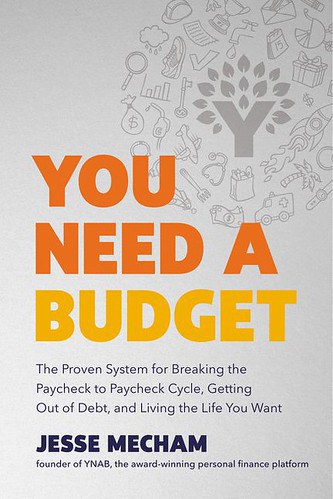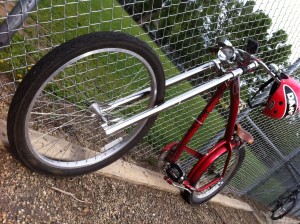How to save for a down payment

It’s never too soon to begin saving for a down payment if you believe homeownership will be in your near future. Even if you don’t think homeownership will be in your future, creating a plan and forming good saving habits can still help keep you on track. This is particularly true right now in Canada ( , or any other hot real estate market), as homeownership is becoming incredibly expensive.
As a Canadian, I’d like to start by saying I think we have a little house-crazy. We view homeownership as an important financial milestone, and we often buy in before we are ready. There are many reasons to purchase a home. However, you should also consider the downsides and possible consequences. Before you begin saving for a deposit, you should have a solid financial position and be sure that you are buying for the correct reasons.
In the next 5 years, I will be starting my first purchase. As market prices are constantly changing, and as new policies are implemented, I must know my options to plan appropriately. These tips will hopefully help you eliminate any worries and provide you with some insights into how you can subsidize your down payment.
WHAT IS THE MINIMUM DEPOSIT?
Let me explain that the down payment is the amount of the home purchase price you pay as the buyer. The rest is paid with a Mortgage or secured loan. You will have to pay periodic monthly payments to your mortgage lender, including interest if you decide to take out a loan.
The down payment required in Canada is usually between 5 and 20% of the purchase price. The down payment is higher if the home’s purchase price is higher.
- If the house costs less than $500,000, the minimum amount is 5%.
- You must pay 5% of the price of the home between $500,000 and $999,999. For the amount above $500,000, you will have to pay 10%.
- You must put down 20% of the price for homes costing $1 million and more.
WHAT IS the right amount of a down payment?
Every homeowner will have a different amount to put down, depending on a variety of factors, including finances, risk tolerance and preferences. should consider a number of factors when deciding how much to put down. The cost of Canada Mortgage and House Corporation CMHC insurance is one thing to consider. CMHC is required if you are putting less than 20% of the purchase price down. You can add the cost of insurance to your mortgage payment to protect your lender. It may be worth it to pay at least 20% more than the minimum amount in order to avoid paying this fee. A 20% down payment may not always be the best option.
Consider the opportunity costs of investing more in your home versus taking money from other assets, such as investments. Some financial experts recommend that you put down as little money as possible, so that you can invest this money in the stock exchange to earn more than your mortgage interest rate.
It’s worth talking to a professional about the low interest rates. It is important to know how much mortgage payment you can afford. This will determine the amount of down payment that you require as a buyer.
SHOULD i SAVE FOR a down payment while in debt?
This is important to know before I discuss saving strategies. Although I don’t believe you should be debt-free before saving for a downpayment, I think it’s important to pay off any high interest debt. Most high-interest debt comes from revolving loans, where you can pay up to 20% or more while paying down the loan. The more you delay paying it off, then the higher interest rate will be. Prioritize paying off this debt first.
Student loans have a lower rate of interest, at just 2-6%. You should prioritize making payments but you may also feel the need to save up for a downpayment or invest in stocks.
How to fund your down payment:
Here are some personal financial actions that you can take to fund your downpayment, as well as government policies that will help homebuyers.
1. Plan your savings
You must have a plan for your savings. Spend a night out on the town and decide how much you can realistically save each month for your downpayment.
You should automate as much of your finances as you can and pay yourself in advance through a monthly pre-authorized contribution. You won’t have to worry about spending the money elsewhere because it will be automatically sent into your savings account. You can set a reminder to remind you to send money around payday if you don’t want to automate or can’t.
If you’re wondering where to put your money, then I recommend that you open a high-interest account. You won’t make much money (1-2%) but it is risk-free. It’s best to avoid investing in stocks for goals less than five years. You won’t have the time to ride any market volatility.
Check out our articles How To Cut Back On Non-Essential Expenditures, and Control Impulse Spending And Save Money to help you boost your savings.
2. Earn more money
Increase your income is another way to boost savings. As someone who strongly believes in getting the rest that you need, and avoiding damaging effects of hustle-culture, I don’t want anyone to ever feel pressured into taking on a second job. Never feel guilty for setting your own boundaries. You are the best person to know what your current limits are and if your plate is full.
There are many ways you can earn extra money from home doing what you love. Check out this list of 48 ways to side hustle. Recently, I saw a woman on Instagram making $50 per month by taste testing. How can I sign-up?
Consider asking for a pay raise at your company, if you haven’t had one in a while. List the actions you have taken in the last few months and their positive impact on your company. It may be hard to accept a no given the past year, but it will help you prepare for the next negotiation.
Watch this: How do you negotiate your salary
3. Borrowing from your RRSP or TFSA using the Home Buyers Plan
You may not know that you can use money from your investment account to buy a house. This is true whether it’s your RRSP or TFSA account, or a brokerage.
You will need to be eligible for the Home Purchase Plan (HBP), which allows you to withdraw money from your RRSP without any tax consequences. You must be a Canadian and purchase a home within the last four years. The maximum amount per person is $35,000 You must return the money to the account in 15 years or less, otherwise the government will tax it as regular income. Check out my article on the Home Buyers Plan for more information.
You have more options to withdraw money from your TFSA than you do from an RRSP. You can withdraw as much as you like, and then the next year the government will reinstate your contribution room.
If you want to save money for a downpayment, it’s a good idea to use your investment account. However, don’t forget the opportunity costs of not letting that money grow in the stock markets. You should never put your retirement at risk. Consider leaving some money in your account or check to see if your employer offers a pension plan.
4. First-time home buyer incentive: Apply Now
First-Time Buyer’s Incentive is a program that helps Canadians buy their first home. The government offers Canadians an interest-free mortgage or loan between 5-10% depending on the date the home was constructed.
This loan has a unique feature: it’s a shared equity mortgage. The 5-10% repayment is determined by the future value of the house, and not the purchase price. If the value of the home increases, then the repayment percentage equals a higher dollar value. However, if it decreases, the dollar value is lower. It protects you from any potential downside risks, but it can also reduce your upside potential up until you pay off the mortgage. You must meet certain criteria to be eligible for the program.
Check out the Eligibility Calculator and see if you qualify for the First-Time Buyer Incentive.
As a young Canadian, I am right there with you…
I can understand your frustration and feeling helpless about the prospects of becoming a homeowner. As a Canadian youngster living in one the most competitive markets in the nation, I’m sure you feel the same way. I supported my boyfriend during his attempt to purchase a first home. He was outbid by more than a hundred thousands dollars without even a home inspection.
We live in a crazy world, but the most important thing is to not go beyond your budget, take breaks if you feel emotionally exhausted, and share your frustrations with other people going through similar things.
These tips will hopefully help you to feel more confident about your options, and in greater control of your goals for homeownership.










+ There are no comments
Add yours